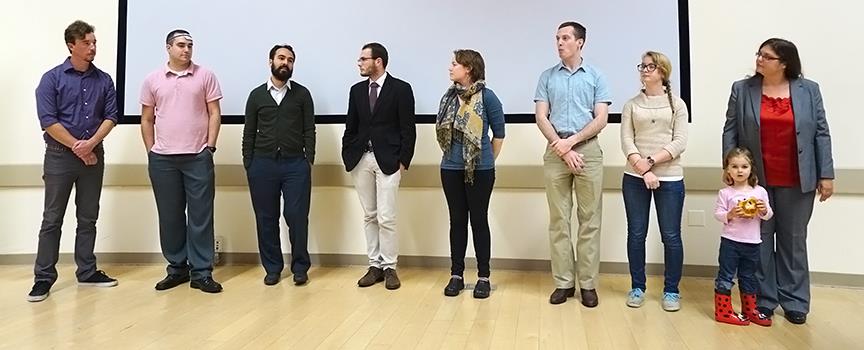Top Stories
Find out who the winners are from Preliminary Rounds 9 and 10 of the 2016 Grad Slam!
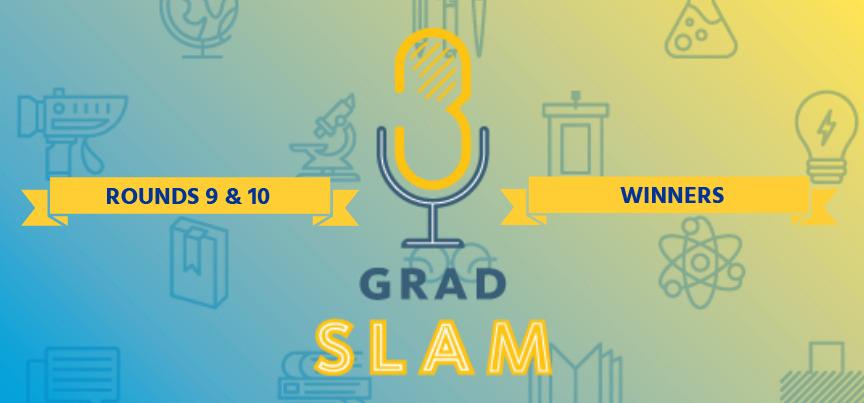
The last two preliminary rounds for the 2016 Grad Slam are in the books. Six grad students were selected as winners of Rounds 9 and 10. Each earned a $50 UCSB Bookstore gift card and the right to compete in the Semifinals next week.
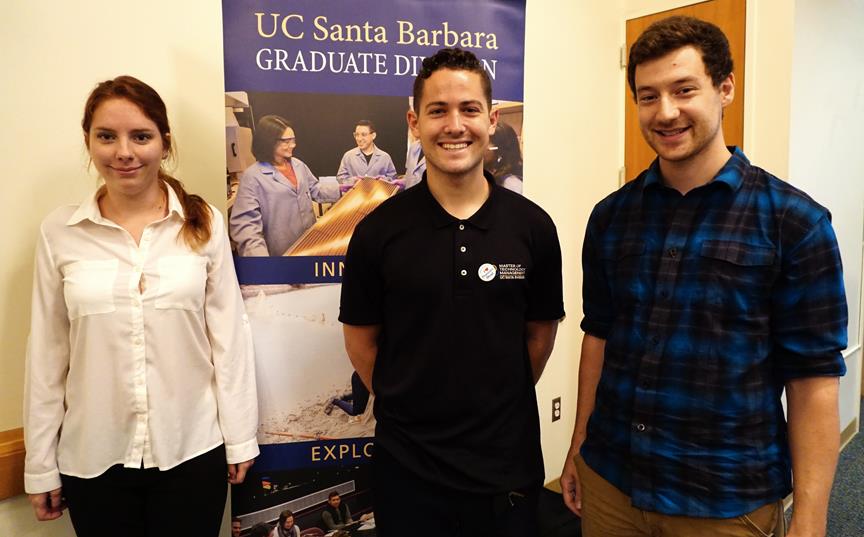
Round 9
Brett Carpenter
Jesilyn Faust
Curt Nehrkorn, People's Choice
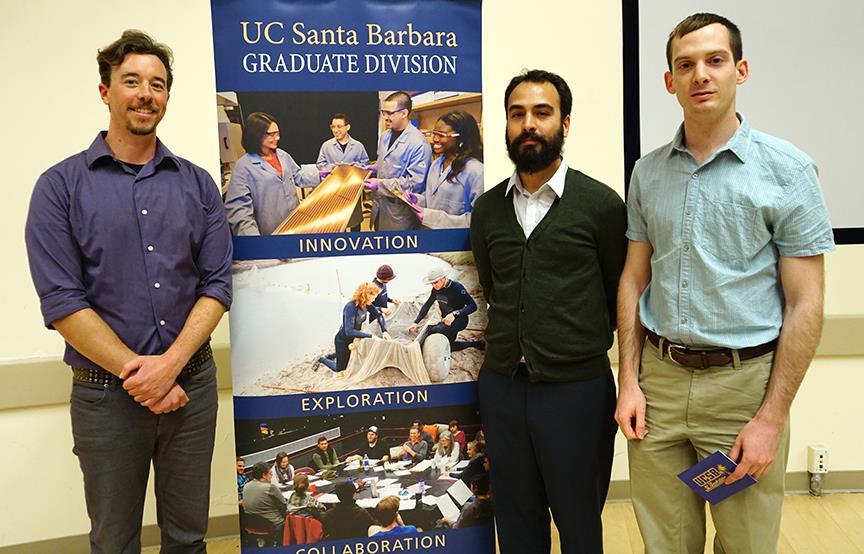
Round 10
Nathan Prisco
Geoff Willard
JV Decemvirale, People's Choice
View photos and read synopses of all the talks from Rounds 9 and 10 below. You âmay find the full Grad Slam competition schedule here.
Round 9
Friday, April 8 | 11 a.m. to noon
McCune Conference Room, HSSB 6020
Forest Cannon | Geography
Weather and Climate Modeling in High Mountain Asia: Uncertainty in the Future of Asia's Water Resources
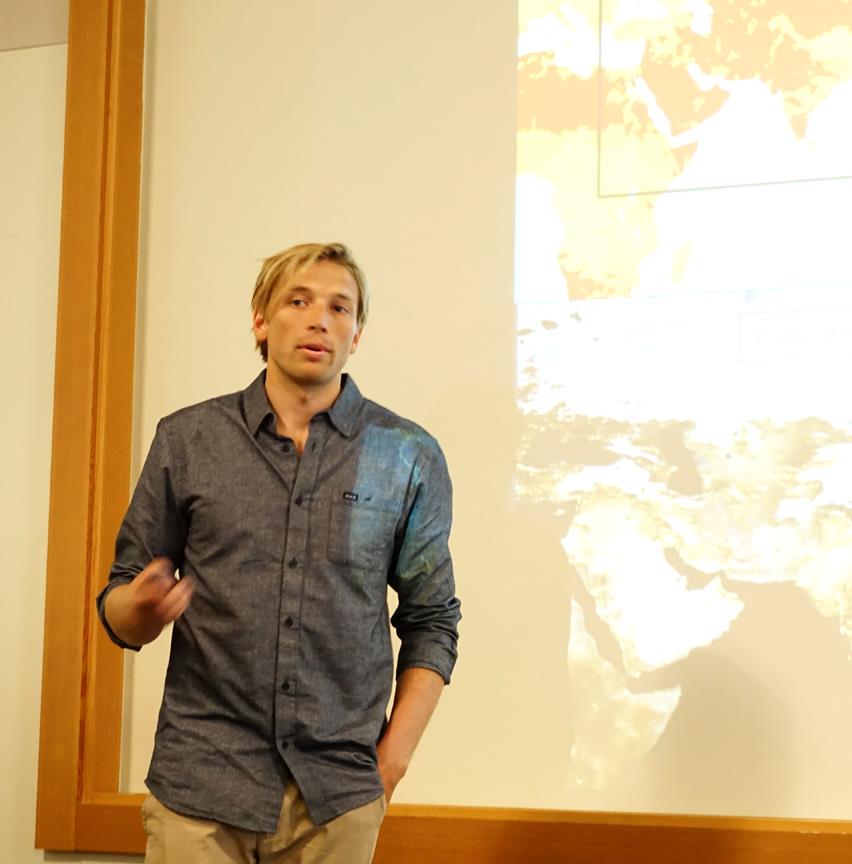 Winter precipitation in High Mountain Asia (HMA), including the Himalaya and Karakoram Mountains as well as the Tibetan Plateau, sustains the region's glaciers and snowpack, which melt seasonally to supply water resources for billions of people across Asia. Unfortunately, the current state and future fate of these water resources are not well understood on account of difficulties in measuring and modeling climate and hydrology across the expansive and remote region. This research utilizes satellite-remote sensing products and a high spatial-resolution weather model to determine how well global circulation models, which are used by the Intergovernmental Panel on Climate Change to assess regional impacts of future global warming, represent the physical mechanisms that generate precipitation in HMA. Based on these findings we identify uncertainty and biases in current and predicted estimates of Asia's water resources, and thus provide necessary information to support water resource management in a highly vulnerable part of the world during unprecedented global change.
Winter precipitation in High Mountain Asia (HMA), including the Himalaya and Karakoram Mountains as well as the Tibetan Plateau, sustains the region's glaciers and snowpack, which melt seasonally to supply water resources for billions of people across Asia. Unfortunately, the current state and future fate of these water resources are not well understood on account of difficulties in measuring and modeling climate and hydrology across the expansive and remote region. This research utilizes satellite-remote sensing products and a high spatial-resolution weather model to determine how well global circulation models, which are used by the Intergovernmental Panel on Climate Change to assess regional impacts of future global warming, represent the physical mechanisms that generate precipitation in HMA. Based on these findings we identify uncertainty and biases in current and predicted estimates of Asia's water resources, and thus provide necessary information to support water resource management in a highly vulnerable part of the world during unprecedented global change.
Brett Carpenter | Technology Management
Small Sensors, Big Data: The Future of Climate Changing Behaviors
I will be discussing the field of consumption data disaggregation - how small sensors developed by our New Venture Competition team stand to provide powerful information to modify consumption behaviors, reduce our impact on the environment, and spur a culture of knowing.
Jesilyn Faust | Global Studies
Public Morality, Private Victims: Violence in a Global Era
My work analyzes global and local responses to violence against women by looking at the case of Amina al Falali, a teenager who committed suicide after being forced to marry her rapist. I argue that activists aligned with power structures locate the site of violence in Islamic Moroccan masculinity while local and grassroots activists locate the site of violence in state structures of oppression.
Curt Nehrkorn | Physics
Mining for Dark Matter
Dark matter is the "missing" or "invisible" mass thought to constitute nearly 85% of the total matter in the universe. So far, the study of dark matter has been limited to the observation of its gravitational effects on galaxies and other astrophysical structures; however, there is good motivation for the hypothesis 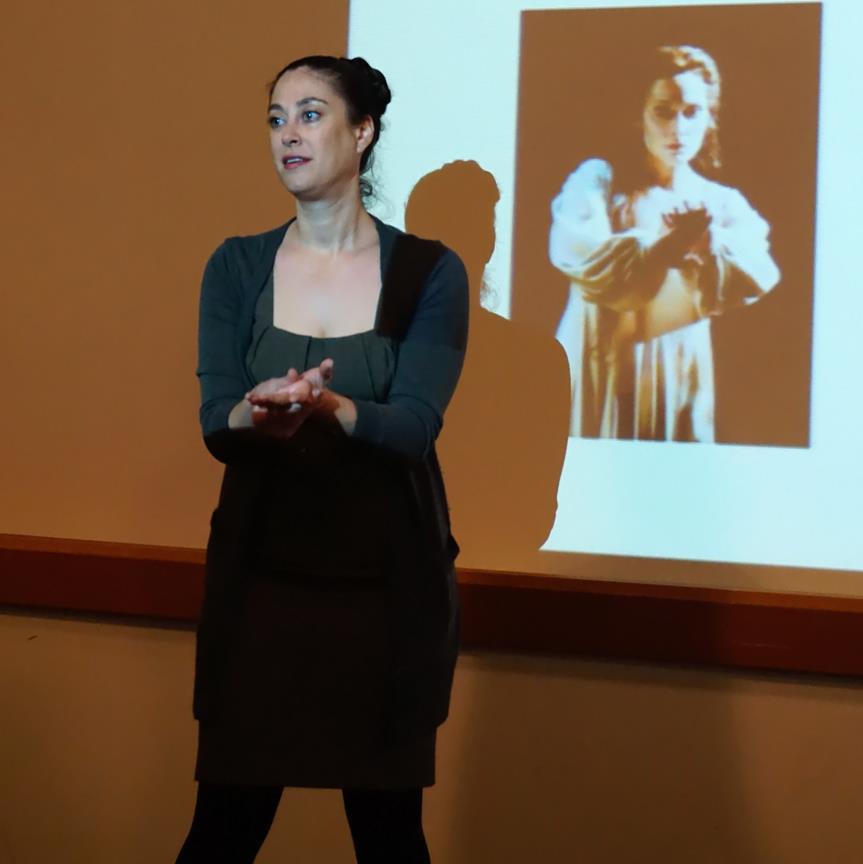 that dark matter does interact with "ordinary" matter, albeit very rarely. My presentation will focus on the work I've done with colleagues at UCSB and elsewhere to build and operate the LUX detector. The LUX detector is deployed almost a mile underground in a former gold mine in South Dakota, and holds the distinction of being the most sensitive dark matter in the world.
that dark matter does interact with "ordinary" matter, albeit very rarely. My presentation will focus on the work I've done with colleagues at UCSB and elsewhere to build and operate the LUX detector. The LUX detector is deployed almost a mile underground in a former gold mine in South Dakota, and holds the distinction of being the most sensitive dark matter in the world.
Avila Reese | Theatre & Dance
Impossible Women - Performance and Practice, Femininity and Power in Contemporary Representations of Medea and Lady Macbeth
My research investigates 20th and 21st century renditions of Medea and Lady Macbeth in order to trace how the performer is influenced through her own practices as well as the socio-cultural present and past. The intent is to develop a pragmatic analysis documenting how representations of power and femininity evolve through the performance itself.
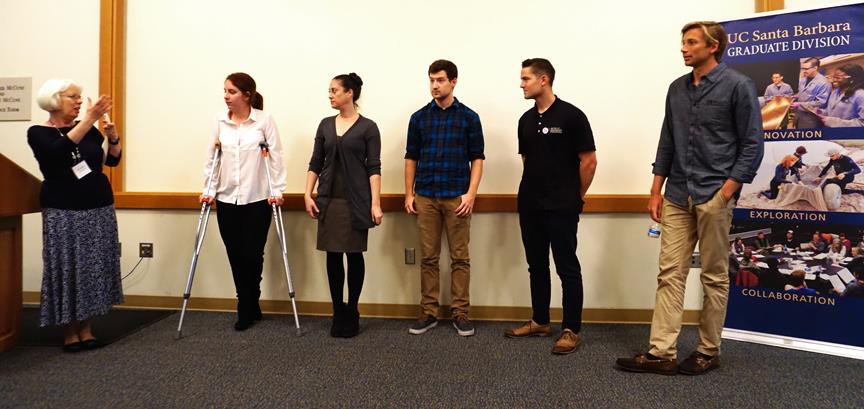
â
Round 10
Friday, April 8 | 3 to 4 p.m.
SRB Multipurpose Room
JV Decemvirale | History of Art & Architecture
Knowing Your Place and Making Do: Radical Arts Organizing in Black and Latino Los Angeles, 1960 to Present
I will present on a constellation of art organizations founded and managed by people of color in Los Angeles from 1960 to the present. These organizations were founded and managed by a wide range of people: retired women city workers, artists of color, a nun, museum guards and art preparators. My presentation will focus on how these groups worked to create gathering spaces and the methods by which they formed their own artistic spaces and made communal spaces through art.
Evan Layher | Psychological & Brain Sciences
Improving Memory-Based Decision-Making through Neurostimulation
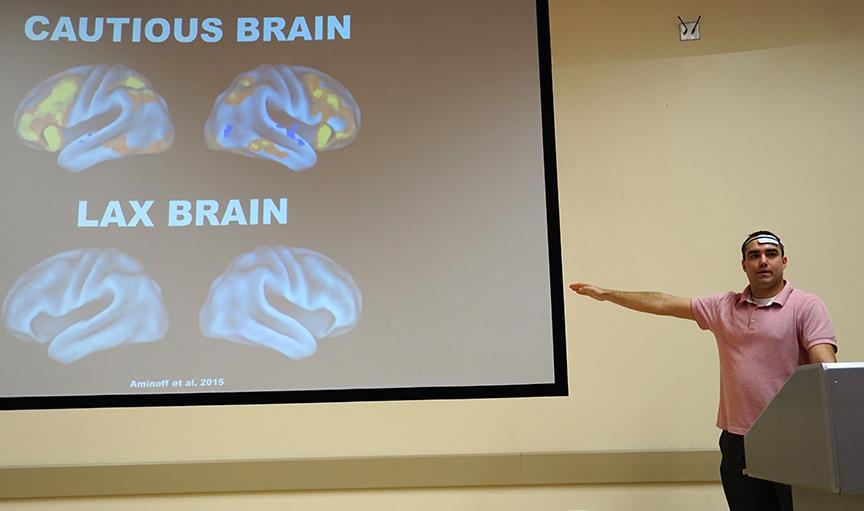 We are faced with memory-based decisions every day (e.g., do I need to buy more milk? Should I introduce myself to that person, or have we already met?). There are many situations where we need to be very cautious when making a memory-based decision (e.g., is that the person I saw commit the heinous crime?). Conversely, there are situations where we should be more liberal with our memory judgments (e.g., a TSA agent should question anyone who looks like a criminal). When we become more conservative with our memory judgments, there is increased metabolic activity in the frontal and parietal cortices. My research aims to improve decision-making in people by making these brain regions more or less active (depending on the situation) through non-invasive electric current stimulation.
We are faced with memory-based decisions every day (e.g., do I need to buy more milk? Should I introduce myself to that person, or have we already met?). There are many situations where we need to be very cautious when making a memory-based decision (e.g., is that the person I saw commit the heinous crime?). Conversely, there are situations where we should be more liberal with our memory judgments (e.g., a TSA agent should question anyone who looks like a criminal). When we become more conservative with our memory judgments, there is increased metabolic activity in the frontal and parietal cortices. My research aims to improve decision-making in people by making these brain regions more or less active (depending on the situation) through non-invasive electric current stimulation.
Theo LeQuesne | Global Studies
Communicating Climate Justice
I will be discussing the Climate Justice Movement and how it can reach more diverse audiences with its radical solutions to climate change. I argue that climate justice campaigns are more successful communicators when they deploy relatable and engaging narratives that connect to their audience's values, showing that stories trump facts. I provide examples from two case studies.
Nathan Prisco | Chemical Engineering
Molecular Insights into Natural Pozzolans as CO2 Avoiding Construction Materials
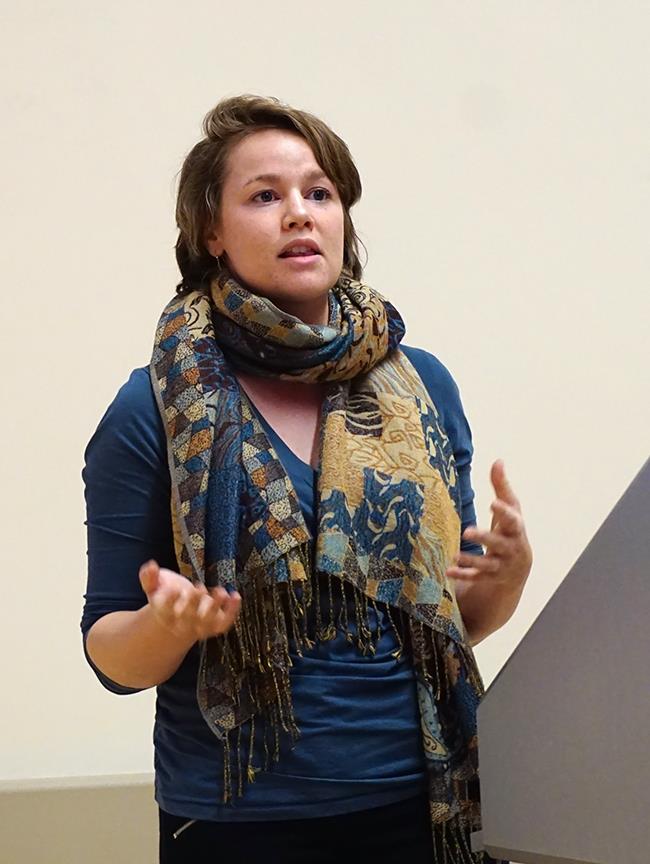 The use of pozzolanic materials as cement dates back to antiquity. These materials have since been replaced with Portland cement, which currently accounts for 9% of global carbon dioxide emissions. The goal of this research is to probe molecular level details of cement hydration through the use of solid-state nuclear magnetic resonance. This information is used to design a hybrid pozzolan containing cement âthat meets or exceeds the quality of Portland cement.
The use of pozzolanic materials as cement dates back to antiquity. These materials have since been replaced with Portland cement, which currently accounts for 9% of global carbon dioxide emissions. The goal of this research is to probe molecular level details of cement hydration through the use of solid-state nuclear magnetic resonance. This information is used to design a hybrid pozzolan containing cement âthat meets or exceeds the quality of Portland cement.
Laura Reynolds | Earth Science
Megafloods of California's Past
I'll talk about the historical and sedimentary record of huge flood events in southern California, focusing on the storm of 1861-2 when ~40 straight days of rain inundated most of central and southern California. In previous years I talked about tsunami risk and sea level change in California (turns out our coastline has a lot of hazards).
Adrianna Simone | Chicana & Chicano Studies
"It Was NEVER Fiction": The Decolonized Voice of Michele Serros
During an oral history project with Michele Serros, author of "Chicana Falsa" (fake Chicana), she told me that she "wrote from the stomachache." Her words were very particular, and as I explored other Chicana authors, I found echoing sentiments. My oral history with Serros is a key component of my dissertation research because sharing stories is the first stop on the path to understanding one's identity. I will provide invaluable insight into a dear friend and writer whose life was prematurely shortened but whose stories continue to influence and inspire others.
Elayne Thomas | Materials
Organic Thermoelectrics: Creating Energy Through Heat
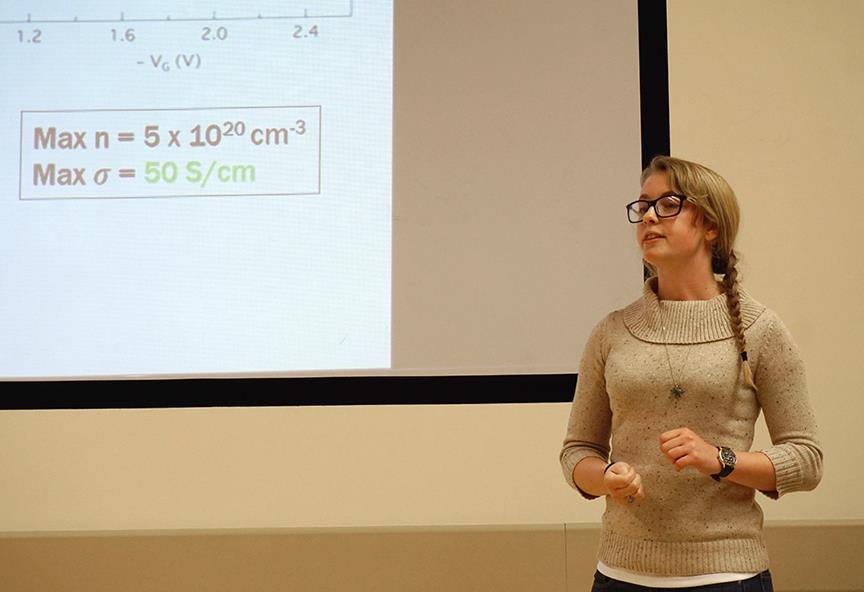 All energy processes create some amount of heat due to the laws of thermodynamics, but last year, more than half of the energy created in the U.S. was dissipated as this waste heat. Thermoelectrics are a fascinating class of materials that have the ability to generate energy from a temperature gradient via a phenomenon called the Seebeck effect. While most thermoelectrics that are available commercially are made from inorganic materials, they are composed of unfriendly materials and require energy-intensive manufacturing processes. My interest is to develop organic thermoelectric materials that both surpass the performance of their inorganic counterparts and are flexible, which could be utilized in wearable devices.
All energy processes create some amount of heat due to the laws of thermodynamics, but last year, more than half of the energy created in the U.S. was dissipated as this waste heat. Thermoelectrics are a fascinating class of materials that have the ability to generate energy from a temperature gradient via a phenomenon called the Seebeck effect. While most thermoelectrics that are available commercially are made from inorganic materials, they are composed of unfriendly materials and require energy-intensive manufacturing processes. My interest is to develop organic thermoelectric materials that both surpass the performance of their inorganic counterparts and are flexible, which could be utilized in wearable devices.
Geoff Willard | Bren School of Environmental Science & Management
Where're Wolves?: Mapping Wolf Habitat and Wolf-Livestock Conflict Hotspots in California
My recently completed Bren School Master's thesis group project addressed the fact that wolves are naturally traveling to California from Oregon, and that the state is charged with managing this apex predator. I conducted spatial analyses to determine the locations in California that offer the best wolf habitat, as well as the locations that may be at most risk of conflicts between wolves and livestock.
